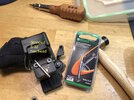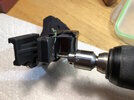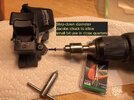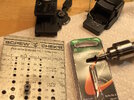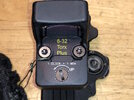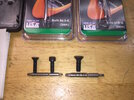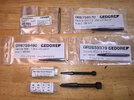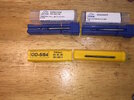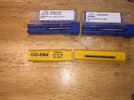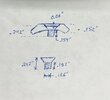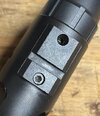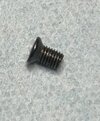Holy torqued, Batman! I was trying to take off the scope ring bases on a Savage Axis to replace them with a picatinny rail. First screw I bubba upped with an allen wrench. It was not moving, so I tried a little heat and tried a little more force (going against my rule of "If you have to force it - don't") Anyway, the allen wrench slipped to an angle not in line with the screw head, and the screw head stripped. A Google search said to try a torx bit that fits. That worked on the remaining 3 screws, probably because they weren't stripped already, but holy torqued, they were all REEAAALLYY tight - like the Hulk was the factory worker who installed them. It however did not work on the screw that was already stripped. That screw just stripped worse.
A number of other suggestions on Google were to Dremel a slot and use a screw driver, use a screw extractor, drill the head of the screw off and use a vise grip on the protruding post of the screw, drill the head off and use a vise grip to remove the remaining shank of the screw, and finally drill out the screw and rethread to a larger size.
Any advice or details on the next steps listed?
1. Dremel a slot and remove screw with a screw driver
2. Use a "Grabit Pro" or screw extractor (looking for advice on this one in particular)
3. Drill and pop head of screw off and use vise grip to remove remaining shank.
4. Drill and rethread, I'm not going to do this if it comes to it. I'd take it to a gunsmith at this point.
I would like to attempt the removal using the techniques listed, in the order listed. My though on this is each step is a little more damaging to the screw head, so doing a higher number step eliminates the possibility of a lower step.
A number of other suggestions on Google were to Dremel a slot and use a screw driver, use a screw extractor, drill the head of the screw off and use a vise grip on the protruding post of the screw, drill the head off and use a vise grip to remove the remaining shank of the screw, and finally drill out the screw and rethread to a larger size.
Any advice or details on the next steps listed?
1. Dremel a slot and remove screw with a screw driver
2. Use a "Grabit Pro" or screw extractor (looking for advice on this one in particular)
3. Drill and pop head of screw off and use vise grip to remove remaining shank.
4. Drill and rethread, I'm not going to do this if it comes to it. I'd take it to a gunsmith at this point.
I would like to attempt the removal using the techniques listed, in the order listed. My though on this is each step is a little more damaging to the screw head, so doing a higher number step eliminates the possibility of a lower step.


